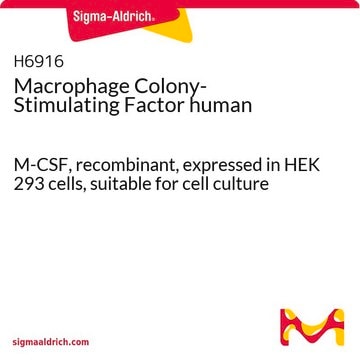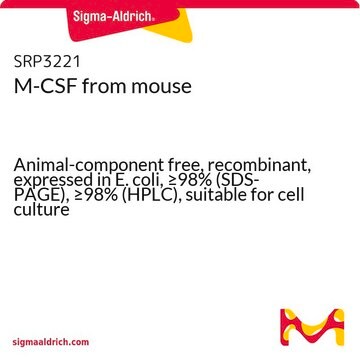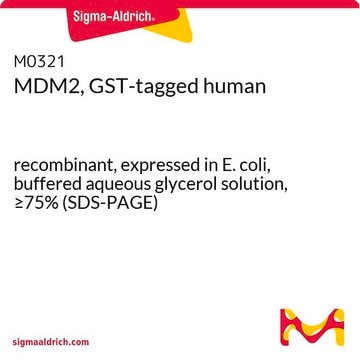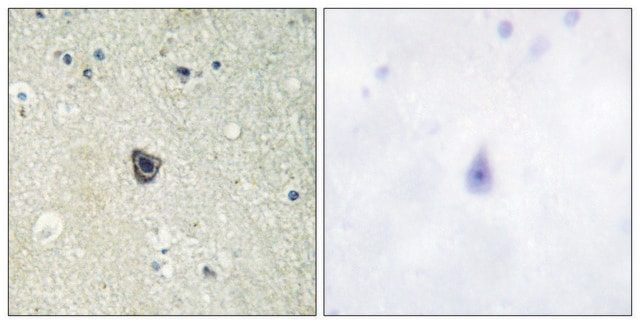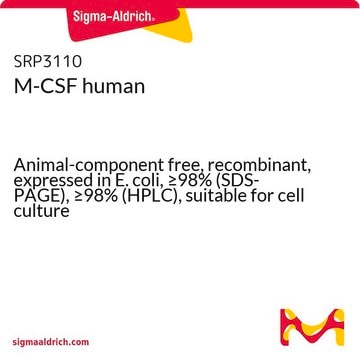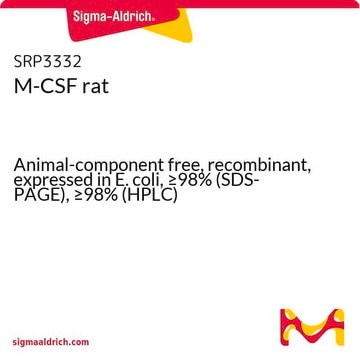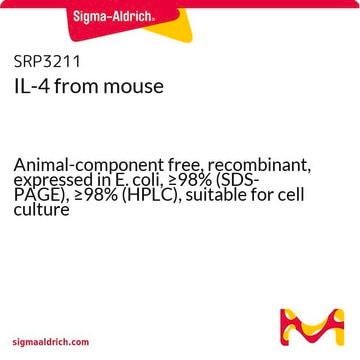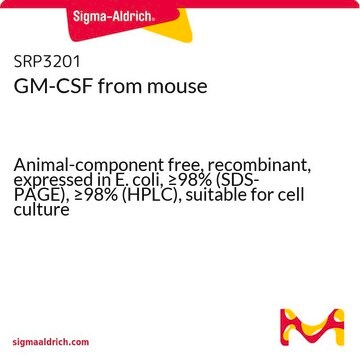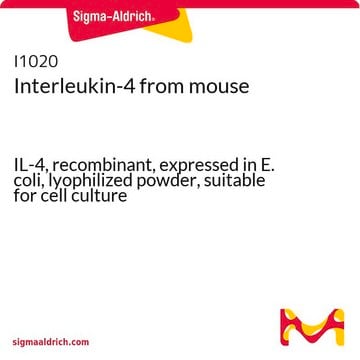M9170
Macrophage Colony-Stimulating Factor from mouse
≥98% (SDS-PAGE), recombinant, expressed in E. coli, lyophilized powder, suitable for cell culture
Sinonimo/i:
CSF-1
Scegli un formato
Scegli un formato
About This Item
Prodotti consigliati
Nome del prodotto
Macrophage Colony-Stimulating Factor from mouse, M-CSF, recombinant, expressed in E. coli, lyophilized powder, suitable for cell culture
Origine biologica
mouse
Livello qualitativo
Ricombinante
expressed in E. coli
Saggio
≥98% (SDS-PAGE)
Stato
lyophilized powder
Potenza
0.500-3.000 ng/mL ED50
Qualità
endotoxin tested
PM
dimer 18.2 kDa (containing 156 amino acid residues)
Confezionamento
pkg of 10 μg
tecniche
cell culture | mammalian: suitable
Impurezze
≤1.000 EU/μg
Colore
white
N° accesso UniProt
Temperatura di conservazione
−20°C
Informazioni sul gene
mouse ... Csf1(12977)
Cerchi prodotti simili? Visita Guida al confronto tra prodotti
Applicazioni
Azioni biochim/fisiol
Stato fisico
Risultati analitici
Avvertenze
Warning
Indicazioni di pericolo
Consigli di prudenza
Classi di pericolo
Eye Irrit. 2 - Skin Irrit. 2 - STOT SE 3
Codice della classe di stoccaggio
11 - Combustible Solids
Classe di pericolosità dell'acqua (WGK)
WGK 2
Punto d’infiammabilità (°F)
Not applicable
Punto d’infiammabilità (°C)
Not applicable
Dispositivi di protezione individuale
dust mask type N95 (US), Eyeshields, Gloves
Scegli una delle versioni più recenti:
Certificati d'analisi (COA)
Non trovi la versione di tuo interesse?
Se hai bisogno di una versione specifica, puoi cercare il certificato tramite il numero di lotto.
Possiedi già questo prodotto?
I documenti relativi ai prodotti acquistati recentemente sono disponibili nell’Archivio dei documenti.
I clienti hanno visto anche
Active Filters
Il team dei nostri ricercatori vanta grande esperienza in tutte le aree della ricerca quali Life Science, scienza dei materiali, sintesi chimica, cromatografia, discipline analitiche, ecc..
Contatta l'Assistenza Tecnica.